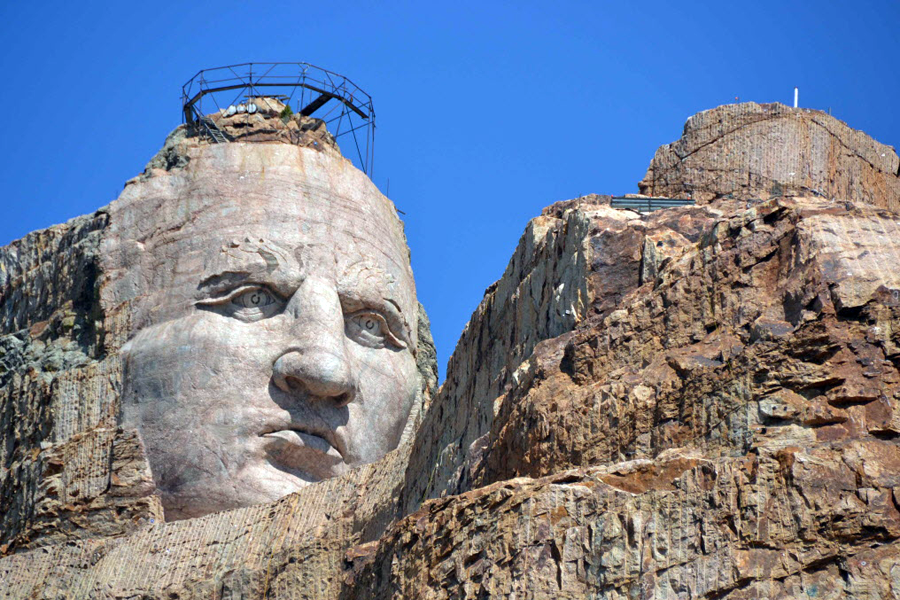Crazy Horse monument led by 3 after death of widow
Loading...
| SIOUX FALLS, S.D.
The death of Crazy Horse Memorial leader Ruth Ziolkowski triggers a succession plan that transfers leadership to three people focused on advancing three main components: the monumental mountain carving, an American Indian museum and an Indian university, its president said.
Ziolkowski, who died Wednesday at age 87, had taken over leadership of the Black Hills tourist attraction that honors Native Americans upon the 1982 death of her husband, sculptor Korczak Ziolkowski.
"There's no one successor or two successors in this story," said Laurie Becvar, president and chief operating officer of theCrazy Horse Memorial Foundation. "The succession is the executive management team and there's three of us. We're all equal players."
Two of Ziolkowski's daughters, Jadwiga and Monique, are the others.
The memorial is envisioned to show the legendary Oglala Lakota warrior astride a horse and pointing east in a carving that will be 641 feet long and 563 feet high — higher than the Washington Monument.
Although the carving remains slow going more than six decades in, the 1,000-acre complex now includes a welcome center, the museum, educational and training area, restaurant, gift shop and the Indian University of North America, which started in 2010 and will host 32 students this summer who take college courses and work at the complex.
"I think the foundation is in the same position without the icon. It's not going to be business as usual because Ruth won't be here," foundation board chairman John Rozell said.
"There was a thought by the general public after Korczak died that the mountain would fail. And I'm sure there are naysayers today that will say the same thing. But it will not. It will continue."
The memorial draws more than a million visitors and brings in millions of dollars every year, mainly through admission fees, as it does not accept government help. Family members won't estimate when the carving will be complete, saying much depends on donations and how much work the sometimes-harsh weather permits.
Rozell said a study to be released this fall "will put a little more detail and emphasis on the particulars on how the mountain might progress — how much money it will take to reveal this particular feature or that."
Becvar said the plan will map out the next steps to finishing Crazy Horse's hand and the horse's head, how much it will cost and when it can be done.
The memorial has hired a new curator for the museum, she said, and work is also underway to determine how the university can become an institution that grants four-year degrees.
"We're creating the next chapter of the Crazy horse Memorial Foundation story," she said.







